Ed’s note: On the eve of Kaisa Para Sa Kaunlaran’s 29th birthday, the author reflects on his relationship with the organization and about his fieldwork in the Philippines. This highlights a lesser-known facet of Kaisa’s work in promoting better understanding of the Philippines and Filipinos among China’s students.
In 1987, the United Nations World Commission on Environment and Development published the influential report, “Our Common Future,” through which a formal definition of sustainable development was given for the first time. Since then, environment and development were put under the same framework. The Philippine government also followed suit, and Palawan was transformed into a natural heritage site where conservation equals sustainability.
Palawan has the most intact ecosystem in the Philippines, with more than 50 percent of the island still covered by forests, with a large number of endemic marine and terrestrial fauna, thereby giving its reputation as “the last ecological frontier of the Philippines.”
On June 19, 1992, former president Corazon Aquino signed the Strategic Environmental Plan as Republic Act 7611, which became the framework for regulations in Palawan.
Palawan has been my focus since the beginning of 2015, where I did a three-month fieldwork.
During my interviews, I focused on the impact of environmental regulations on the local peoples’ lives. If we were to describe the situation 20 years ago as a “crossroad” of transformation, the whole island will meet a “bottleneck” now in the greater transition process – a contradiction between the increasing demand of the people and the demands of environmental protection.
The sustainable spirit: a challenge of ethics
There is no exclusive standard of sustainability, and human societies do not reject a variety of possibilities for sustainable paths.
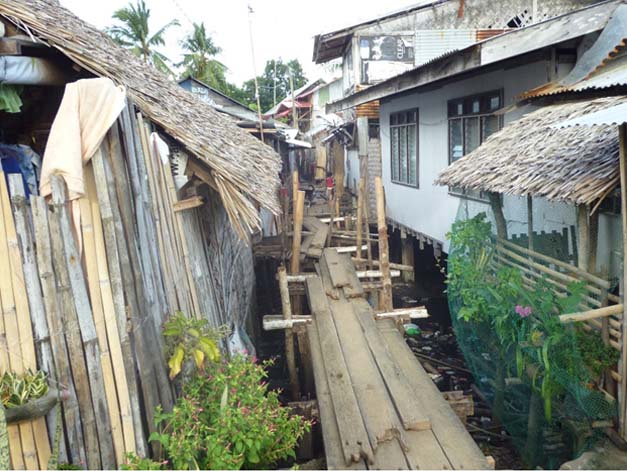
The people as the key actor and those influenced, i.e. the local communities, should be the main focus of sustainability. The Strategic Environmental Plan exposed its “deviation” on its focus, and started a challenge in environmental ethics.
The items manifest that people have to change their former lifestyles according to the standards given by the discipline, and whatever they are turning to, SEP’s only concern appears to be that the alternative way must be eco-friendly. From the perspective of a non-local, the “last frontier” will be under the protection of the SEP.
However, for residents, the problem is not about an unreachable future plan of sustainable development, but rather the law did not clearly state whether sustainability could bring benefits and improvement.
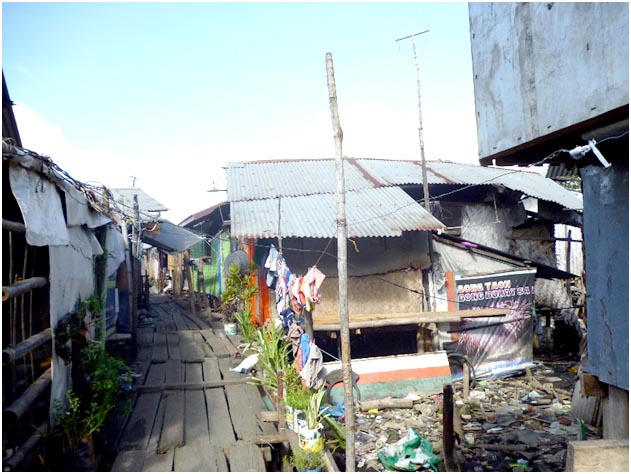
As a consequence, the relation of man and nature has been redefined in the context of “a sustainable model:” people must yield their livelihood to conservation efforts. Such ideology can be interpreted into “a strict environmental regulation” or “a lack of people’s presence.”
Numerous oppositions have existed for many years. The main strategy of the SEP is to protect the whole Palawan through Environmentally Critical Areas Network, where “a total commercial logging ban” has been implemented to guarantee forest coverage.
Exceptions, however, may be granted. The SEP allows the traditional uses of tribal communities of these areas for minimal and soft impact gathering of forest species for ceremonial and medicinal purposes, without any concrete criterion between commercial use and traditional use.
The SEP prioritizes the environment, instead of the people, thus arousing confrontations now and then.What can people get back after all their conservation and participation efforts? According to the government suggestions, many substitutions are possible, like depending on tourism and indigenous handicraft market for income.
The dilemma of eco-friendly subsistence
Tourism seems to be one of the most important incentives for local income, and “eco-tourism” has become the new buzzword as governments try to cash in on the financial windfall of tourist profits and emphasize various forms of eco-tourism at the same time.
Just within the city of Puerto Princesa, tourist destinations are few, and visits can be done in a day. The most famous destination is the Subterranean River National Park, one of the world’s Seven Wonders of Nature, 80 kilometers north of the city.
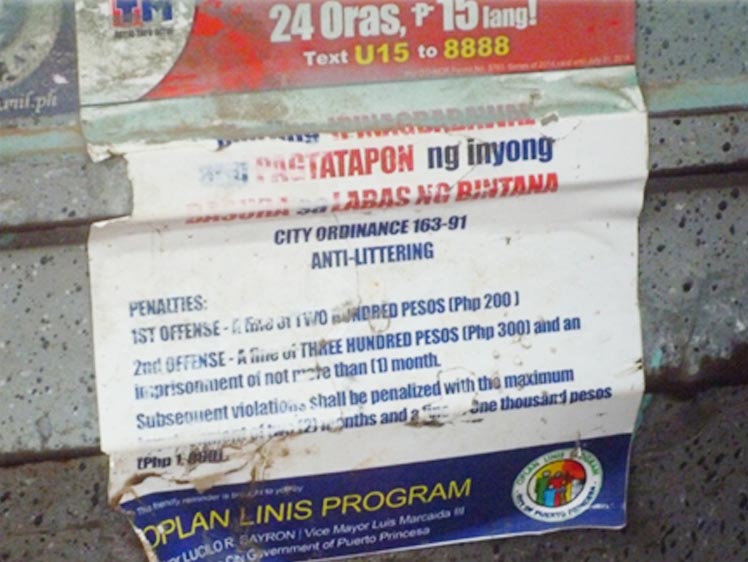
Taking a van to the underground river takes more than two hours. There is only one local community – Barangay Tagabinet – along the way which provides a zip line activity, because of its unique karst land form condition.
Unlike in the underground river area, people in Tagabinet used to depend on kaingin for livelihood, and turned to eco-tourism only recently.
Tourists can find some wood carvings as benches and small artifacts made of plastic bottles as “traditional characteristics” inside the community, and present residents there make a living on tourism.
Interviewees reveal that the real native dwellers of Barangay Tagabinet were the Tagbanua ethnic group, but due to the commercial activities brought by tourism, they sold the land to those migrants and moved to the mountains.
So, technically speaking, the old Barangay Tagabinet was commercialized for tourism, forcing the natives to leave. Most of the mountain area in Puerto Princesa is not suitable for exploitation because of lack of transportation. Neither can barangays in the city take advantage of their geographic features.
Another shortcoming of tourism is its instability. Every year, the tourist population fluctuates because of high and low seasons, making contract workers who rely on tourism vulnerable.
Marco, a hotel owner, complained that there are “too many hotels here already,” and “Palawan is overpopulated by hotels and the rooms outnumber the tourists that come in.”
Participation of the local communities: What is missing?
Practical environmental protection activities require barangay-level participation and promotion. By inquiring into the actual participation of local citizens, researchers will be able to grasp the meaning of environment to Palaweños, and understand their attitude towards future challenges.
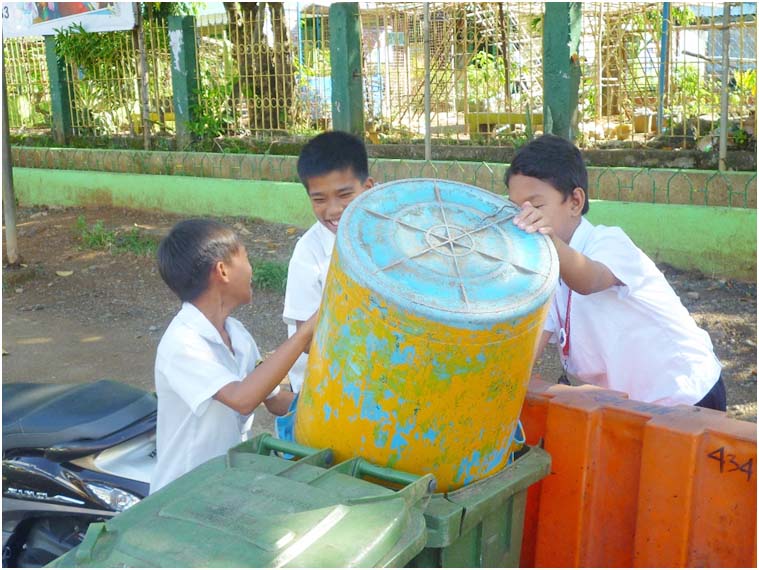
The responses from the citizens during the research were confusing. The locals are vague about the environment and the influence of environmental protection to their life.
Some interviewees said the city and provincial environmental laws were absolutely good for them at the beginning, but had other opinions and complaints afterwards.
Sometimes interviewees strongly criticized some of the regulations for being too harsh for the living, although generally, they still preferred to support the policies for a sustainable development, and want stricter rules for the whole province.
The value of nature has become just another kind of capital that finances and merges conservation and development according to the images and ideals of modern Philippines.
Therefore, the meaning of environment itself is separated from the life of the locals, which results in an ignorance of the actual demands of the people and sustainable development.
In other words, the people need to benefit from the environment, not only from a long-term plan, but also from short-term compensation mechanism.
Conclusions and discussions
Outsiders usually care about the natural environment of Palawan, but those who live there care more about how they can improve their lives.
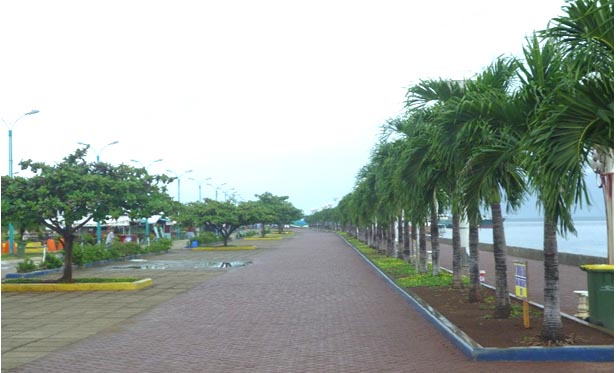
In the past two decades, Palawan showed great ambition in sustainable development. It tried to stop environmental destruction but failed to provide a clear vision of development to the people. However, because of such strong measures, the old morality and ethics are challenged.
Ecocentrism and anthropocentrism are mingling: they cannot fully accept the current government regulations solely for the environment, but they are participating in the campaign and trying to protect as much as they can.
The protection in Palawan is very radical – relatively sustainable for the natural resources, but less developmental for the quality of life. The case study of Palawan pushed people to rethink the man-nature relationship.
No matter how enthusiastic, human society cannot fully be a subset of nature. It is the right time to reexamine the status of the people in both the regulations and the environment. — First published in Tulay Fortnightly, Chinese-Filipino Digest 29, no. 6 (August 23-September 5, 2016): 9, 11.